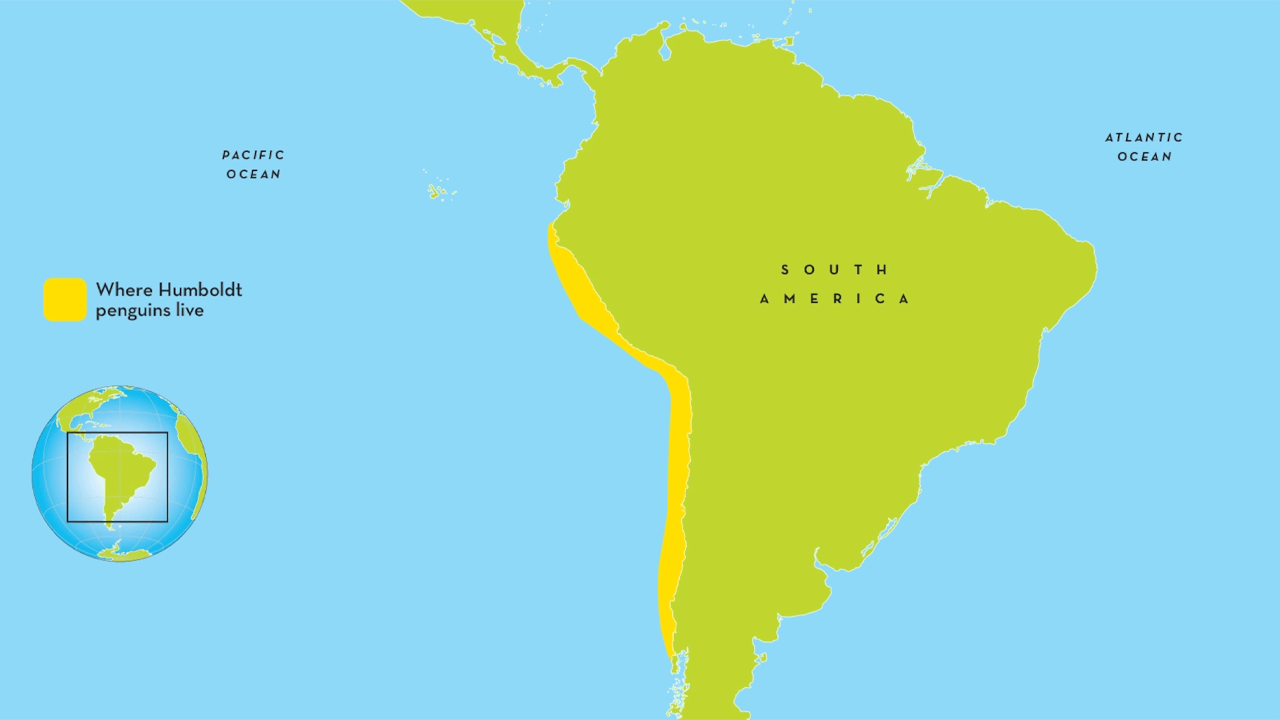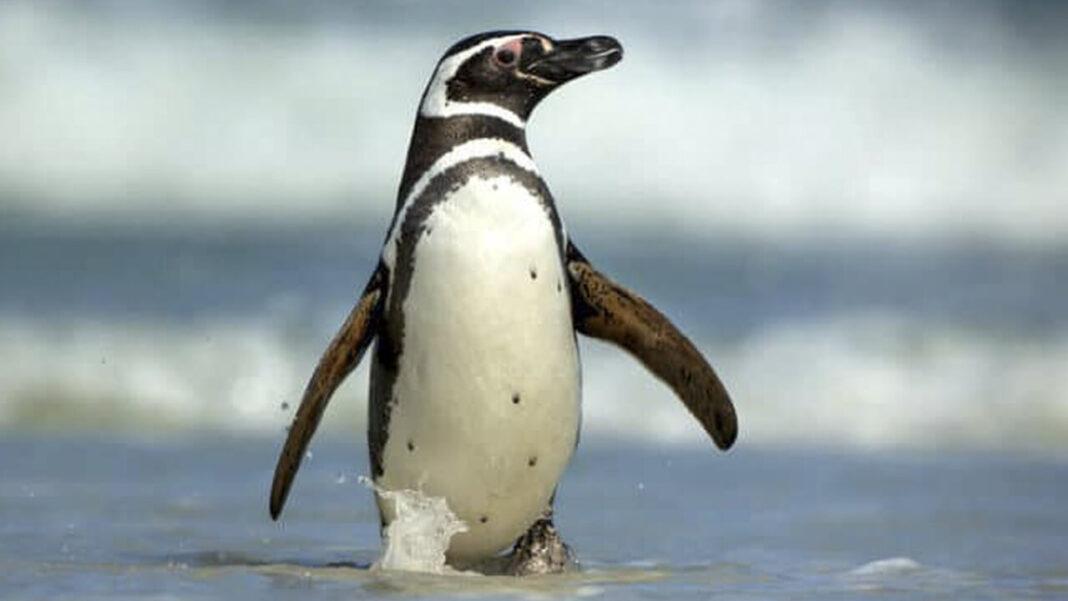Humboldt Penguin
Scientific Classification
| Common Name | Humboldt Penguin, Peruvian Penguin |
| Kingdom | Animalia |
| Phylum | Chordata |
| Class | Aves |
| Order | Sphenisciformes |
| Family | Spheniscidae |
| Genus Species | Spheniscus Humboldti |
Scientific Name
The Humboldt penguin is a South American penguin, were named for the German explorer, geographer, and scientist, Alexander Von Humboldt, who explored Cuba, Mexico, and South America in 1799. Spheniscus humboldti is the scientific name for the Humboldt penguin. Spheniscus comes from the Greek word, sphēniskos, meaning small wedge.
Breeding
- Humboldt penguins breeding occurs between March to December with peaks in April and August to September. The timing of egg-laying is highly dependent on geography and the El Niño-Southern Oscillation (ENSO) phase. The historical breeding sites for this species are burrows on layers of guano. Humboldt penguin nests can be found at beaches, caverns, hollows, or in rocky areas, they scrape clean of vegetation.
- The Humboldt penguin nests in loose colonies, with most pairs laying two eggs of the same size 4 days apart, requiring 41 days of incubation. Their breeding schedule depends on the abundance of food. They breed immediately after molting when food is abundant and reduces solar radiation.
- The amount of time spent in the water is related to breeding status. Non-breeding penguins spend an average of 60.0 hours in water before returning to the land and travel a maximum of 163.3 hours. Breeding penguins spend less time offshore, averaging 22.4 hours and the maximum 35.3 hours.



Humboldt Penguin Facts And Information
| Type | Bird |
| Description | Like other temperate penguins, Humboldt penguins have blackheads with white stripes under the eyes, a black band of feathers on the back, and white feathers on the chest. They also lack feathers on their legs |
| Distribution | Restricted to the coasts of Chile and Peru |
| Size | 56–66 cm (22–26 in) |
| Weight | 2–5 kg (4.4–11 lbs) |
| Colour | Grey, Black, White |
| Skin Type | Feathers |
| Food | Krill, Fish, Shrimp |
| Diet | Anchovetta (small fish), Crustaceans, Herring |
| Incubation | 40–42 days |
| Sexual Maturity | 2–7 years old |
| Lifestyle | Colony |
| Life Span | 15–20 years |
| Range | The Humboldt penguin lives along the coasts of Peru and Chile in western South America |
| Habitat | Open Ocean, Rocky Shoreline |
| Population | 32,000 mature individuals |
- Humboldt penguin, a medium-sized penguin, has blackish-gray feathers on the back and white feathers on the chest, with white stripes under the eyes that wrap around the side of the head and to the chin forming a horseshoe shape.
- Humboldt penguins are also called Peruvian penguins.
- Humboldt penguins come from South America.
- The Humboldt penguins are native to the coastal areas of Chile and Peru.
- Humboldt penguin lives about as far north as the equator and has the most northward range of any penguin species except the closely related Galapagos penguin.
- Humboldt penguins are about 20 years old.
- Humboldt penguins can reach speeds of 30 mph.
- The ocean current where the penguins live on the west coast of South America was named after Alexander von Humboldt.
- Humboldt penguins are about the same size as Magellanic penguins, with an average length of about 70 cm and an average weight of 4 kg.
- Humboldt uses their wings to help them swim, and their webbed feet to steer underwater.
- Female penguins are slightly smaller than male penguins but otherwise look very similar.
- Breeding occurs between March and December with peaks in April and August to September.
- The male penguin arrives at the site a few days before the female penguin and prepares to build the nest.
- After mating, the female penguin lays two white eggs. Both parents take turns sitting on the eggs, usually in about 40 days, until the eggs hatch. The couple also works together to feed the chicks.
- The birds breed throughout the year, but breeding seems to depend on food availability and nesting sites.
- Humboldt penguins use covered nests that protect their eggs from intense sunlight, aerial and terrestrial predators.
- Being a Humboldt penguin isn’t easy: the seabirds face a range of natural and man-made hazards. In the ocean, leopard seals, fur seals, sea lions, sharks, and killer whales hunt Humboldts. On land, their eggs and chicks are preyed on by foxes, snakes, rodents, and introduced predators such as cats and dogs.
- Humboldt penguins mainly eat fish, especially anchovies, herring, and smelt. They also eat squid and crustaceans (shrimp and krill).
- Humans also hunt Humboldts for food and collect eggs from their breeding sites.

